Celebrating the International Day for Biological Diversity with micro conservation
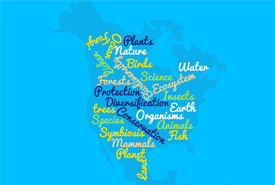
Biodiversity (Graphic by NCC)
There’s nothing like the potential loss of Earth’s rich biodiversity and planetary life support systems to make one feel, well, a little overwhelmed. Our individual actions can seem like small roles on a very big stage.
But it’s important to remember that our current crisis of biodiversity loss didn’t result from one catastrophic event. It has mostly been created slowly, from thousands of small individual actions. And the solution to halting and reversing the loss of nature needs to occur from thousands of small individual actions.
Big actions for nature conservation
The Nature Conservancy of Canada (NCC) is really good at big conservation actions. From working with ranchers to protect 30,535 acres (12,357 hectares) at the Waldron in Alberta’s southern foothills, to the 136,000-acre (55,03-hectare) Darkwoods property in BC’s Selkirk Mountains, to the 10,250-acre (4,148-hectare) Kenauk property in western Quebec, NCC's conservation projects help protect large, intact ecosystems and habitat for animals that need lots of wild space.
These big actions are critical for nature conservation. They are essential to protecting some of Canada’s most important species and habitats. They are a legacy that will be cherished by our children and grandchildren. But these big actions are not sufficient.
How can you play a role?
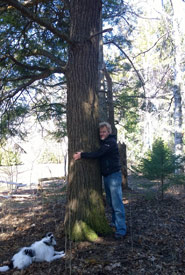
Hugging a tree (Photo by Dan Kraus/NCC staff)
Many of us steward a small piece of Canada. It could be a farm, recreational property or a few square metres in an urban backyard. While a farm, recreational property or urban backyard is not a wilderness or a wildlife preserve, these places, your places, are all still a part of nature. And your places have a role in conservation.
May 22 marks the 23rd International Day for Biological Diversity. The theme for this year is "mainstreaming biodiversity": recognizing that biodiversity is not something far away, but something that is close and personal, and has an impact on all our lives. By reversing the loss of biodiversity we are not only protecting nature, but also our own well-being.
And we all have a role in nature conservation.
Five small acts of conservation
Here’s a checklist of five small individual acts of conservation we can all take. These are not actions that deal with sustainable business, or good governance or even reducing the amount of stuff you buy and throw away. Those are important, and you should keep recycling your paper, inflating your tires and buying sustainable bananas.
But let’s focus on direct actions; actions that will benefit the biodiversity around you right now. Small acts of conservation that will help nature, and will also benefit you and your community.
1. Be for the birds
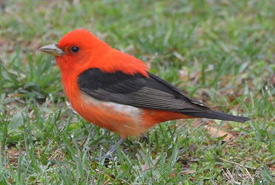
Scarlet tanager (Photo by Andy Reago & Chrissy McClarren, Wikimedia Commons)
Songbirds link ecosystems across the Americas. The Baltimore oriole or scarlet tanager on your property today may have been in Venezuela when you were shoveling snow or skiing. Every year, billions of songbirds make the journey to Canada for one simple reason: the explosion of life that happens in our northern spring makes it a great place to raise a family (okay, it’s the bugs).
Sadly, migratory songbirds have been rapidly declining. While many species remain common, they are at risk because of steep population declines. For example, the wood thrush and barn swallow are both considered at risk because their populations in Canada have declined by more than 75 percent in the last 40 years.
Fortunately, there’s a lot more we can do to make migratory songbirds feel more welcome. A study by Environment Canada found that house cats and building strikes are major sources of bird mortality. Research is showing that migratory birds aren’t too picky about where they stop to refuel and will use cities and other developed landscapes.
You can help by creating migratory bird pit-stops on your property. Planting clusters of native shrubs or trees can provide important habitat. If every Canadian with a single-detached house provides just one small patch of vegetation for songbirds in their yard, we’d add more than 7 million new sites for nesting and resting.
2. Soak it all in
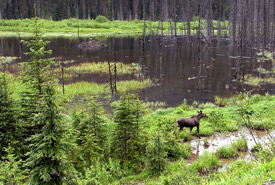
Moose in a wetland, British Columbia (Photo by Thomas Drasdauskis)
We have a funny relationship with water. Too little, and we cherish it as our most precious natural resource. Too much, and we treat it like a waste product to be flushed from the land as quickly as possible. On many yards and properties, water no longer sits and soaks into the ground, but runs off roofs, driveways, fields and lawns into drains and eventually into our streams and lakes.
But your water solution can be someone else’s water pollution. One of the biggest issues for Canada’s freshwater is too much runoff. The problem with runoff is that it’s not just water. It carries sediments, nutrients and other pollutants into our streams and lakes. This can clog streams with silt and cause algal blooms in even very big lakes such as Lake Erie and Lake Winnipeg.
Nature’s solution is to hold water on the land in wetlands, forests and prairies. This not only releases water more slowly, but helps remove sediments and recharges our aquifers.
Where you can, slow the flow. Think about how water can be held on your property in rain barrels, rain gardens, wetlands or other natural habitats. Make sure the water that leaves your property is a clean as it can be. Remember, the more water that infiltrates into the ground on your property, the more you are helping to conserve Canada’s freshwater habitats.
3. Cover it up
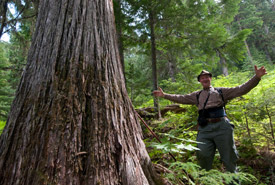
Retired Darkwoods forester Roland Meyers admires the giant trees on the property (Photo by Bruce Kirkby)
The canopy cover of a forest and the shade of a tree have an incredible impact on nature and people. A TD Economics study found that an urban trees provide significant energy savings in our cities. A study on the benefits of conserved forests by TD Economics and NCC found that an acre of conserved forest can provide thousands of dollars of important services, such as reducing floods, removing air pollution and sequestering carbon.
Not only are trees the original (and still the best) carbon capture and storage method ever developed (just not by us), they literally create habitat in what was once thin air. When we fill that space above our heads with limb and leaf, we create new habitats.
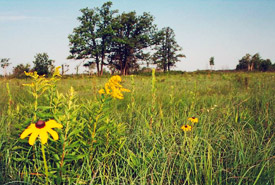
Prairie grassland, Manitoba (Photo by NCC)
Now, we can’t go out and plant trees everywhere. Canada has prairies, grasslands and other open country habitats that cannot support trees or that may need to maintain their open conditions to support rare wildlife and vegetation communities. But even these open country ecosystems have forested elements, often along river valley lands, where tree cover supports species and maintains water quality.
However, there are millions of places in our cities, around our homes and farms that could support more trees. If you can, find a place to plant a native tree on your property, or support a forest restoration project at NCC. You’ll be helping create important habitats, and making the world a cooler place.
4. Know your place
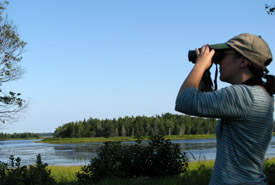
Birding at the Tabusintac Estuary, NB (Photo by NCC)
There is a special magic that comes from knowing wild places and wild things. Unfortunately, particularly for the eight in 10 Canadians that live in cities, we are losing our nature knowledge. An ancient literacy of knowing species and their relationships is slipping away, and with it, an understanding of our connectedness to other living things and our natural world. When we lose our sense of wonder and appreciation for nature, the importance and urgency of conservation is lost.
The good news is that learning about nature is getting easier. While a walk through the woods or grasslands with an elder or experienced naturalist may still be the best way to learn, a few clicks on the internet can reveal not only the species in and around your home, but also how to identify them.
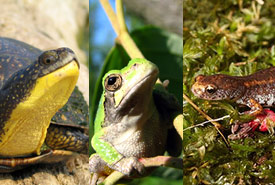
Blanding's turtle and gray treefrog (photo by Ryan M. Bolton); Four-toed salamander (Photo by Brian Gratwicke)
Go and learn to identify the plants and animals that share your ecosystem. Even learning about five new species a year can change the way you see the world. As you get to know wild things, they will start reveal themselves. What appears as a blanket of forest or prairie becomes a richer tapestry.
Knowing and teaching nature literacy, the wonder that lies around all of us, can lead to important conservation actions.
5. Leave some wild
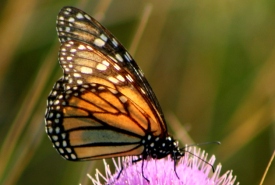
Monarch butterfly (Photo by NCC)
Nature is pretty generous. In most ecosystems, humans can use a quarter, or even a half, of natural habitats and most species can be maintained. Our challenge in Canada is that while we have the rare opportunity to protect some of world’s last true wilderness in our northlands, we have lost significant amount of our natural habitats in the south. We may have over-extended that generosity, and this impacts both nature and the well-being of people.
We have nature in our cities, farms and homes. It may not the same nature that was there several years ago, but it can provide important habitat. There are hundreds of species that will share our space, if we provide room for them. Even in cities, there are many rare and declining species, from monarch butterflies to chimney swifts that will benefit from patches of wild.


